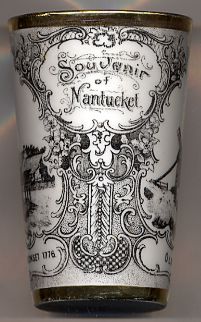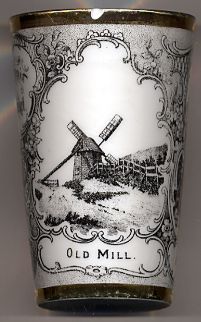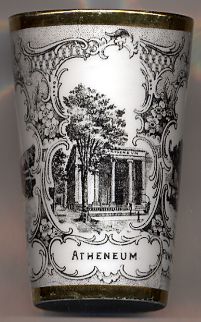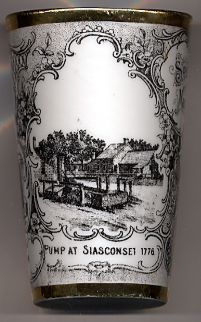

|
| UNITED STATES OF AMERICA | |
| MASSACHUSETTS | |
| Nantucket County |

|
Nantucket is an island 30 miles (48.3 km) south of Cape Cod, Massachusetts, in the United States. Together with the small islands of Tuckernuck and Muskeget,
it constitutes the town of Nantucket, Massachusetts, and the coterminous Nantucket County, which are consolidated. Nantucket is a tourist destination and summer colony.
The population of the island soars from approximately 10,000 to 50,000 during the summer months, due to tourists and summer residents. The Nantucket Historic District,
comprising all of Nantucket Island, was added to the National Register of Historic Places on December 13, 1966. In doing so the National Park Service paid particular note
to the settlements of Nantucket and Siasconset. The island features one of the highest concentrations of pre-Civil War structures in the United States.
Nantucket takes its name from a word in an Eastern Algonquian language of southern New England, originally spelled variously as natocke, nantican, and nautican. The meaning of the term is uncertain, though it may have meant "in the midst of waters," or "far away island." The island's beginnings in western history can possibly be traced to its conjectured sighting by Norsemen in the 11th century. But it was not until 1602 that Captain Bartholomew Gosnold of Falmouth, England sailed his bark Concord past the bluffs of Siasconset and really put Nantucket on the map. The island's original inhabitants, the Wampanoag Indians, lived undisturbed until 1641 when the island was deeded by the English to Thomas Mayhew and his son, merchants of Watertown and Martha's Vineyard. The earliest English settlement in the area began on neighbouring island Martha's Vineyard. The history of Nantucket's settlement by the English did not began in earnest until 1659, when Thomas Mayhew sold his interest to the "nine original porchasers," Tristram Coffin, Thomas Macy, Christopher Hussey, Richard Swayne, Thomas Barnard, Peter Coffin, Stephen Greenleafe, John Swayne and William Pike, "for the sum of thirty Pounds...and also two beaver hats, one for myself, and one for my wife." Nantucket was formerly the world's leading whaling port. Herman Melville comments on Nantucket's whaling dominance in Moby Dick: "Two thirds of this terraqueous globe are the Nantucketer's. For the sea is his; he owns it, as Emperors own empires." By 1850, whaling was in decline and the island suffered great economic hardships, worsened by the 1846 "Great Fire" that, fueled by whale oil and lumber, devastated the main town. Another contributor to the decline was the silting up of the harbor which prevented the large whaling ships from entering and leaving the port. As a result of this depopulation, the island was left under-developed and isolated until the mid-20th century. The isolation kept many of the pre-Civil War buildings intact and by the 1950s, enterprising developers began buying up large sections of the island and restoring them to create an upmarket destination for the wealthy in the Northeastern United States. This highly controlled development can be compared to neighbouring Martha's Vineyard, the development of which served as a model for what the Nantucket developers wanted to avoid. In the 1960s Nantucket and Martha's Vineyard considered seceding from the Commonwealth of Massachusetts. In 1977, Nantucket and Martha's Vineyard actually attempted (unsuccessfully) to secede from the Commonwealth of Massachusetts. The secession vote was sparked by a proposed change to the Massachusetts Constitution, which reduced the islands' representation in the Massachusetts General Court. [Text ada pted from http://en.wikipedia.org/wiki/Nantucket]
|
Built in 1746 by Nathan Wilbur, a Nantucket sailor who had spent time in Holland, the
 Old Old[Text adapted from http://www.nha.org/sites/oldmill.html] 
|
Designed by architect Frederick Brown Coleman and completed soon after the original building was destroyed in the Great Fire of 1846, the
 Atheneum Atheneum[Text adapted from http://www.nantucketatheneum.org/history.html] 
|
Siasconset (also Sconset, Oggawame, Sconset, Seconset, Siasconsett, or Sweseckechi) is a
village in eastern Nantucket. The various spellings of its name led the Board on Geographic Names to designate
its official spelling in 1892. Although it is unincorporated, it has a post office, with the ZIP code of 02564.
The [Text adapted from http://en.wikipedia.org/wiki/Siasconset,_Massachusetts, http://www.travellady.com/Issues/July08/5207Siasconset.htm] 
| |||||||
![[scale]](lineal.jpg)